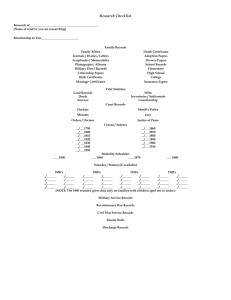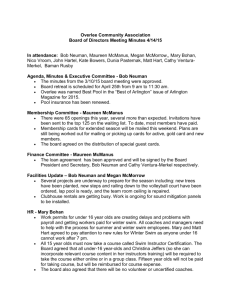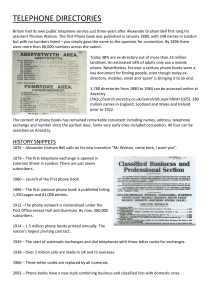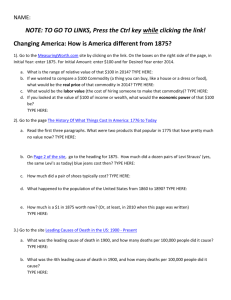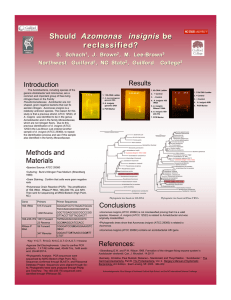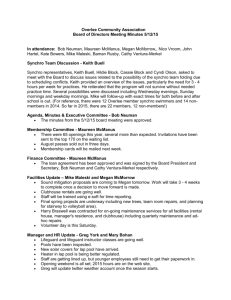Lebertia insignis Neuman, 1880
advertisement
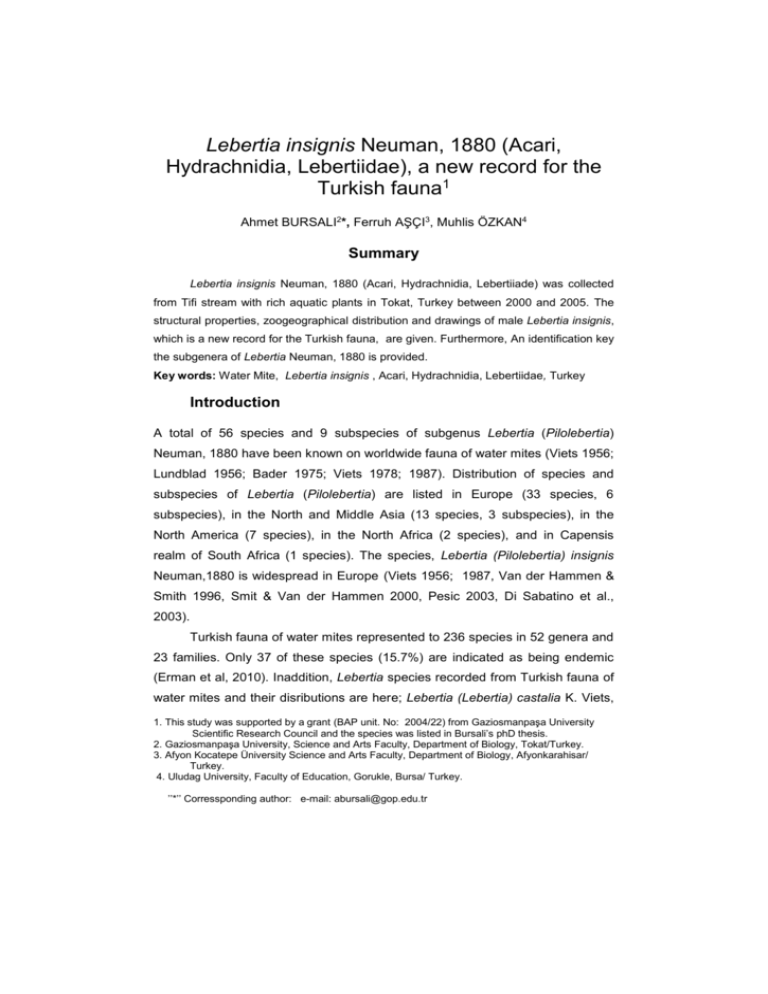
Lebertia insignis Neuman, 1880 (Acari, Hydrachnidia, Lebertiidae), a new record for the Turkish fauna1 Ahmet BURSALI2*, Ferruh AŞÇI3, Muhlis ÖZKAN4 Summary Lebertia insignis Neuman, 1880 (Acari, Hydrachnidia, Lebertiiade) was collected from Tifi stream with rich aquatic plants in Tokat, Turkey between 2000 and 2005. The structural properties, zoogeographical distribution and drawings of male Lebertia insignis, which is a new record for the Turkish fauna, are given. Furthermore, An identification key the subgenera of Lebertia Neuman, 1880 is provided. Key words: Water Mite, Lebertia insignis , Acari, Hydrachnidia, Lebertiidae, Turkey Introduction A total of 56 species and 9 subspecies of subgenus Lebertia (Pilolebertia) Neuman, 1880 have been known on worldwide fauna of water mites (Viets 1956; Lundblad 1956; Bader 1975; Viets 1978; 1987). Distribution of species and subspecies of Lebertia (Pilolebertia) are listed in Europe (33 species, 6 subspecies), in the North and Middle Asia (13 species, 3 subspecies), in the North America (7 species), in the North Africa (2 species), and in Capensis realm of South Africa (1 species). The species, Lebertia (Pilolebertia) insignis Neuman,1880 is widespread in Europe (Viets 1956; 1987, Van der Hammen & Smith 1996, Smit & Van der Hammen 2000, Pesic 2003, Di Sabatino et al., 2003). Turkish fauna of water mites represented to 236 species in 52 genera and 23 families. Only 37 of these species (15.7%) are indicated as being endemic (Erman et al, 2010). Inaddition, Lebertia species recorded from Turkish fauna of water mites and their disributions are here; Lebertia (Lebertia) castalia K. Viets, 1. This study was supported by a grant (BAP unit. No: 2004/22) from Gaziosmanpaşa University Scientific Research Council and the species was listed in Bursali’s phD thesis. 2. Gaziosmanpaşa University, Science and Arts Faculty, Department of Biology, Tokat/Turkey. 3. Afyon Kocatepe Üniversity Science and Arts Faculty, Department of Biology, Afyonkarahisar/ Turkey. 4. Uludag University, Faculty of Education, Gorukle, Bursa/ Turkey. ’’*’’ Corressponding author: e-mail: abursali@gop.edu.tr 1925. Distribution; Erzurum, Muş and Tokat Habitat; Crenobiont. Lebertia (Lebertia) glabra Thor, 1897. Disribution; Niğde. Habitat; Crenobiont, lowland springs, at higher elevations found both in low- and middle order streams. Lebertia (Lebertia) maculosa Koenike, 1902. Distrubion; Rize. Habitat; Rhithrobiont, crenophilous. Lebertia (Lebertia) schechteli Thor, 1913. Distrubion; Elazığ, Erzurum, Kayseri and Van. Habitat; Crenobiont or at least crenophilous. Lebertia (Pilolebertia) porosa Thor, 1900. Distrubion; Afyon, Elazığ, Erzurum, Konya, Rize and Tokat. Habitat: In standing waters and pools of streams. Lebertia (Mixolebertia) turcica Bursalı & Özkan, 2004. Disribution; Tokat. Habitat; Rhithrobiont. (Erman et al., 2007; 2010; Bursalı 2002) To date, there was no record for L. insignis in Turkey. In the present study, L. insignis, which is a new record for the Turkish fauna, was found in Tokat, Turkey and its description, original drawings of some body parts, and its zoogeographical distribution were given. Furthermore, an key was provided to subgenera of genus Lebertia. Materials and Methods Water mite specimens were collected from water lands of Tokat, Turkey and preserved as described earlier by Cook (1974) and Özkan (1981). Figures were drawn with a compound microscope (Olympus CX41, Japan with drawing attachment) and dimensions measured in micrometers (μm). Results Family: Lebertiidae Genus: Lebertia Species: Lebertia insignis Neuman, 1880 Male: Body relatively elongated and 1080/875 in size. Skin thin, smooth and slightly punctuated (Figure 1A). A long seta on the dorsoanterior edge of PII sifts slightly to backward and edge of the ventral side of the part is concave slimly. P-III is prominently expanded to apical side. Medial surface of the P-III with five long seta. Median long seta on the medial surface of this part is closer notably the bottom one settled terminally. A pair of fosses with very sweak seta 2 on the ventral side of P-IV is far off each other (Figure 1C). Dorsal length of palp segments, respectively; 25-110-90-135-30=390 ventral length; 20-78-51-12024=293, heights; 50-62-59-14. The length of coxal region is 700/755 and extend to middle of the ventral side of the body. Furthermore, genital plate not surrounded by epimeral region. Capitular buy is not deep. The length of suture line is the same as length bottom edge side of “ Y ” shaped from the middle side of “ Y ” shaped suture line to capitular buy. The length of the edge, which is middle bottom side of the epimeral region, is smaller than those of the genital flap (Figure 1B). Materials examined: Stream with in rich aquatic plants; Tokat; Niksar, Tifi stream (Kelkit River Basin), 1050 m, 10.IX.2000, 15♂♂; 15.IIIV.2005, 3♂♂. Distribution: Austria, England, Finland, France, Germany, Holland, Hungary, Ireland, Italy, Latvia, Romania, Russia, Swiss, Switzerland, (Viets, 1936; 1956, Pesic 2003, Di Sabatino et al., 2003). Key to the subgenera of genus Lebertia Neuman, 1880 (Derivated from Cook, 1974) 1. Medial surface of P-III with 5 long hairs ………………….….………..….….….. 2 - Medial surface of P-III with more than 5 long hairs ……..……………….….…...4 2. Integument smooth ……………….…………....……..…………..…….…......…..3 - Integument lined or papillae …..…….….…….……...Pseudolebertia Thori, 1897 3. Leg-III and IV many with swimming hairs; P-III short and thick; P-IV elbowshaped and with 7 thin setae on dorsum ………………. Pilolebertia Thori, 1900 - Leg-II without swimming hairs; leg-III and IV with a few swimming hairs; P-III delicate and not cap shaped; P-IV long and smooth edged, and with a few short thin setae on dorsum .………………………...….... Lebertia (s.str) Neuman, 1880 4. Medial surface of P-III with 6 long setae ......................................................... 5 - Medial surface of P-III with 7 long setae ................ Septlebertia Imamura, 1954 5. Integument papillae coarsely or lined; reduced swimming hairs present or not ……………..………..……………………………......…….. Hexalebertia Thori, 1907 - Integument surface with finely papillae, wrinkled, granulated or occasionally smooth; swimming hairs frequently present ................... Mixolebertia Thori, 1906 3 Discussion Lebertia (Pilolebertia) insignis Neuman, 1880 to be euryterm and cosmopolite, type species of subgenus Pilolebertia Neuman, 1880 (Lundblad 1956). This species differs from other Lebertia species by punctuated epimer without any chitin structure on; two long seta settled terminally on the medial surface of P-III very close each other (Viets 1936; 1956; Pesic 2003). Apart from all these specific characters of Lebertia (Pilolebertia) insignis, it is known that some structural properties of its palps are extremely amazing. Some of them are here; shape of P-IV; a pair of fosses with very weak seta on venter of P-IV may close each other or not; the structure of heavy seta distoventral side of P-II, even present or not; setae number of P-II can be different on each one palp (Lundblad 1956). All samples were males, which resemble to the North European species apart from West Mediterranean species displaying extreme variation. Figure 1: Lebertia insignis Neuman, 1880 (Acari, Hydrachnidia, Lebertiiade), Male, A) dorsum of idiosoma venter of idiosoma C) palp; lateral view. 4 Özet Bu çalışmada; Tokat ili Tifi deresinin su bitkilerinin zengin olduğu bölgesinden 2000 ile 2005 yılları arasında yakalanan Lebertia insignis Neuman, 1880 (Acari, Hydrachnidia, Lebertiidae)’in yapısal özellikleri, özgün şekillerinin çizimleri ve dünyadaki yayılış alanları verilmiş ayrıca, Lebertia Neuman, 1880 ‘nın alt cinsleri için bir tanı anahtarı sunulmuştur. Anahtar kelimeler: Su Kenesi, Lebertia insignis Neuman, 1880, Hydrachnidia, Lebertiidae, Türkiye Acknowledgements Authors thank to Gaziosmanpaşa University Scientific Research Council for supporting the research (grant no: 2004/22) and to Dr. Saban Tekin for editing of the manuscript. References Bader, C., 1975. Die assermilben des Schweizerischen Nationalparks.1. SystematischFaunistischer Teil. Ergebnisse der Wissenschaftlichen Untersuchungen im Schweizerischen Nationalpark, 14: 270 pp. Bursalı, A. & M. Özkan, 2004. A new record of water mite species Lebertia turcica sp.n. (Lebertiidae, Hydracnellae, Acari) from Turkey. Bulletin of pure and applied sciences, 23 (A): 113-116. Di Sabatino A., B. Cicolani, R. Gerecke, 2003. Biodiversity and distribution of water mites (Acari, Hydrachnidia) in spring habitats. Freshwater biology, 48 (12): 2163–2173. Cook, D., R., 1974. Water Mite Genera and Subgenera. Memoirs of the American Entomological Institute, 21: 860 pp. Erman, O., M. Özkan, N. Ayyıldız, & S. Doğan, 2007. Checklist of the mites (Arachnida: Acari) of Turkey. Second supplement. Zootaxa, 1532: 1–21. Erman, O., V. Pesic, Y. Esen & M. Özkan, 2010. A checklist of the water mites of Turkey (Acari: Hydrachnidia) with description of two new species. Zootaxa, 2624: 1-48. Lundblad, C.,O., 1956. Zur Kenntnis süd-und mitteleuropäischer Hydrachnellen. Arkiv för Zoologi, 10: 306 pp. Pesic, V., M., 2003. Contribution to the study of some water mites (Acari, Hydrachnidia) from Hungary. Folia historico naturalia musei matraensis, 27: 49–51 Özkan, M., 1981. Doğu Anadolu su akarları (Hydrachnellae, Acari) üzerine taksonomik araştırmalar I. Doğa temel bilimleri, 5 (IA): 25-46. 5 Smit H. & H. Van der Hammen, 2000. Atlas van de Nederlandse watermijten. Nederlandse faunistische mededelingen, 13: 1–272. Van der Hammen, H. & H. Smit., 1996. The water mites (Acari: Hydrachnidia) of streams in the netherlands distribution and ecological aspects on a regional scale. Netherlands journal of aquatic ecology, 30: 175–185 Viets, K., 1936. Wassermilben Oder Hydracarina (Hydrachnellae und Halacaridae). In: Dahl, F.(ed.) Die Tierwelt Deutschlands und der angrenzenden Meeresteile und nach ihren Merkmalen und nach ihrer Lebenweise. Gustav Fischer Verlag Jena, x+574 pp. Viets, K., 1956. Die Milben des Süsswassers und des Meeres. Hydrachnellae et Halacaridae (Acari). Zweiter und dritter Teil: Katalog und Nomenklator. Jena (Gustav Fischer), 870pp. Viets, K.,O, 1978. Hydracarina. 154–181pp.in: J. Illies (editor) Limnofauna Europaea. 2. Aufl., Gustav Fischer, Stuttgart, 532 pp. Viets, K.,O, 1987. Die Milben des Süsswassers (Hydrachnellae und Halacaridae, Acari). 2. Katalog. Sonderbände des Naturwissenschaftlichen Vereinsin, Hamburg 8: 1012 pp. 6
